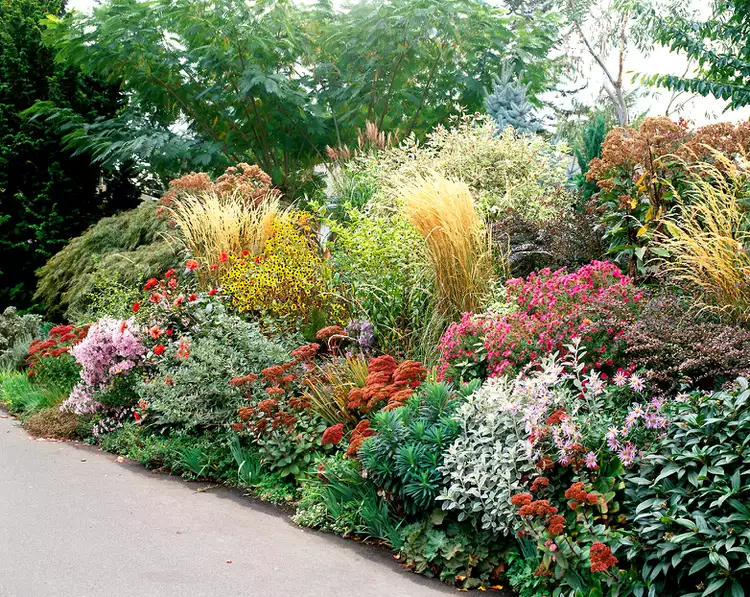This Low-Water Garden Plan Will Look Vibrant Through Droughts

The water-wise plants in this low-water garden plan will create a beautiful display in a sunny, dry spot. For example, it could work around your home's foundation, along your driveway, or on the streetside strip of grass in front of your house—where you may need some extra durable and drought-tolerant options. Stocked with low-maintenance plants that thrive in full sun and well-drained soil, this garden plan is designed to look good, even through extended dry spells. It includes easy-care, drought-tolerant plants that boast special features for survival, such as thick, succulent leaves that store excess water or a slight fuzz that hangs on to morning dew.
Plants for Creating a Low-Water Garden Plan
- 4 Crested iris (Iris cristata): Zones 4-10
- 3 Sweet alyssum (Lobularia maritima): Zones 9-11, annual
- 3 Sedum 'Autumn Joy': Zones 3-10
- 2 Feather reed grass (Calamagrostis × acutiflora 'Karl Foerster'): Zones 4-9
- 1 Variegated redtwig dogwood (Cornus alba 'Elegantissima'): Zones 2-8
- 3 New England aster (Symphyotrichum novae-angliae 'Alma Pötschke'): Zones 4-8
- 1 Spurge (Euphorbia characias): Zones 3-10
- 1 Money plant (Lunaria annua): Zones 5-9; biennial
- 3 Lady's mantle (Alchemilla mollis): Zones 3-7
- 1 Spotted deadnettle (Lamium maculatum 'White Nancy'): Zones 4-8
- 2 Shrubby dusty miller (Brachyglottis compacta): Zones 7-10
- 3 Stonecrop (Sedum cauticola 'Ruby Glow'): Zones 5-9
- 1 Japanese barberry (Berberis thunbergii 'Rose Glow'): Zones 3-9
- 3 Michaelmas daisy (Aster novae-belgii 'Lassie'): Zones 3-9
- 1 Silver Carpet lamb's-ears (Stachys byzantina 'Silver Carpet'): Zones 4-9
If you aren't able to find the exact cultivars listed above, substitute with other varieties that offer similar colors, shapes, and sizes.
Because some plants can become overly aggressive and spread out of control in certain climates, always check which species are considered invasive in your area before planting. For example, Japanese barberry has escaped gardens and invaded natural areas across much of the Northeast and Midwest, so you may want to replace the one in this plan with a similarly-sized spirea if you live in these regions.
Get the Free Low-Water Garden Plan
This garden design includes an illustrated version of the planted garden, a detailed layout diagram, a list of plants for the garden as shown, and complete instructions for planting the garden.